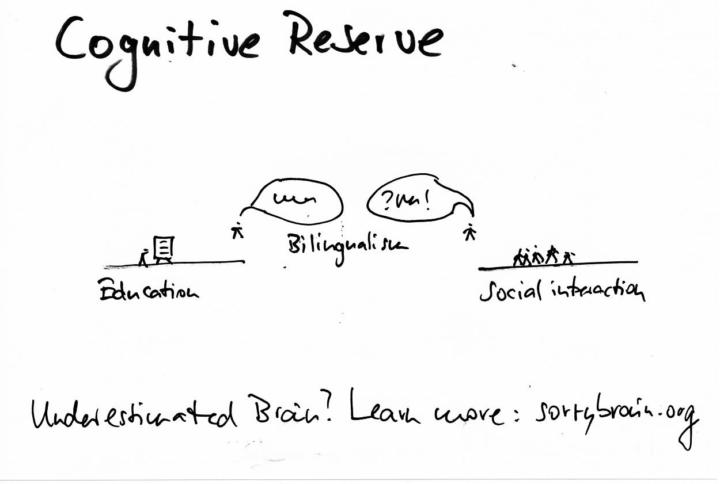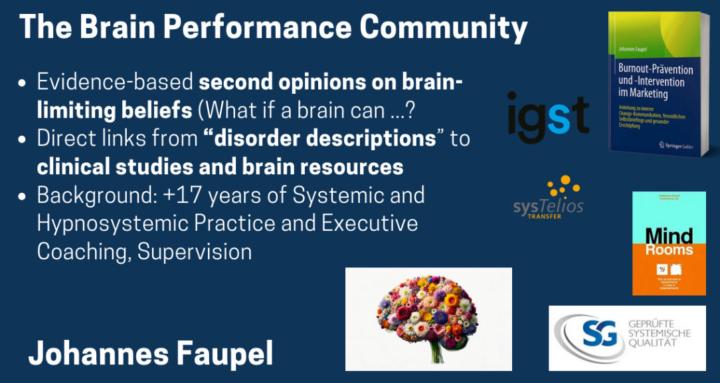
Write something
Cognitive reserve from education, social interaction, bilingualism
Cognitive reserve is the capacity to maintain function despite aging or pathology by using more efficient networks, alternative routes and flexible strategies. Education builds representational depth and learning-to-learn skills; social interaction continuously exercises attention, language, memory and emotion regulation; bilingualism trains conflict monitoring and task switching through code-selection demands. Together they strengthen frontoparietal control, language and default-mode couplings, increasing network efficiency at rest and during effort, and supporting compensation when primary circuits falter. Observational cohorts and imaging studies converge on later clinical onset of cognitive impairment with higher reserve, alongside signatures like lower task-evoked effort for the same accuracy, broader recruitment under load and more resilient white-matter pathways. What remains open are causal dose–response curves, the role of socioeconomic confounds and the conditions under which bilingual advantages generalize. Evident in Neuroscience and Brain Research Education functions like repeated strength training for symbolic manipulation and error-guided learning – years of schooling and ongoing study correlate with delayed expression of dementia symptoms, more robust language and executive test scores and leaner hemodynamic responses during problem-solving, a marker of efficient coding. Social interaction is neural cross-training – conversation, turn-taking and perspective-taking recruit hippocampus, temporal-parietal junction, anterior insula and medial prefrontal cortex, while emotionally meaningful ties buffer stress physiology that otherwise harms memory circuits; larger, more active networks predict slower decline and better everyday function. Bilingualism is an in-place executive tutor – selecting one language while inhibiting the other repeatedly engages anterior cingulate and dorsolateral prefrontal cortex, strengthening inhibition, switching and monitoring; lifelong bilinguals often show later clinical onset for similar brain burden, and imaging reveals greater frontoparietal recruitment or thicker left inferior parietal cortex in proficient speakers. Across these levers, reserve looks like three interlocking properties – efficiency (less effort for the same output), capacity (more available circuitry under load) and flexibility (faster reconfiguration when the usual path stumbles). In data terms, think compact EAVs woven into the story – frontoparietal control network – efficiency – higher; language control circuits – flexibility – increased; social network size – attribute – larger predicts steadier cognition – and simple triples your mind can keep: richer education improves network efficiency; active social life supports hippocampal-DMN integration; bilingual practice enhances conflict monitoring and task switching.
1
0

1-1 of 1
powered by

skool.com/brain-performance-2502
Evidence-based brain performance: Mental health through neuroplasticity, brain training, systemic interventions, using helpful brain functions.
Suggested communities
Powered by
